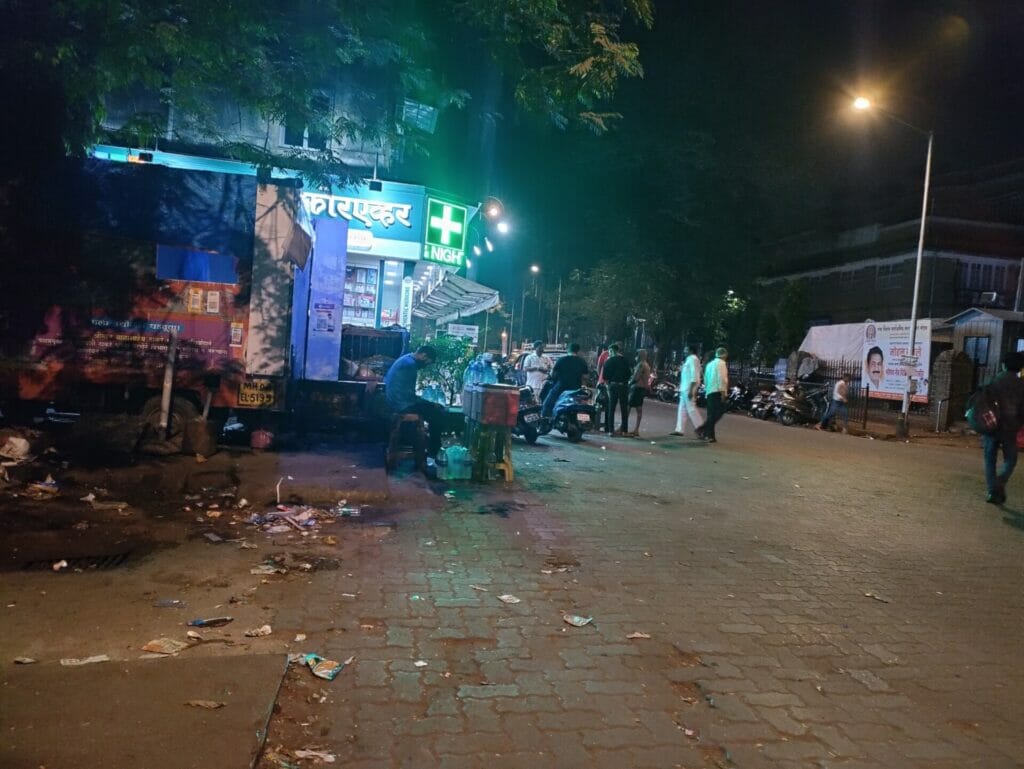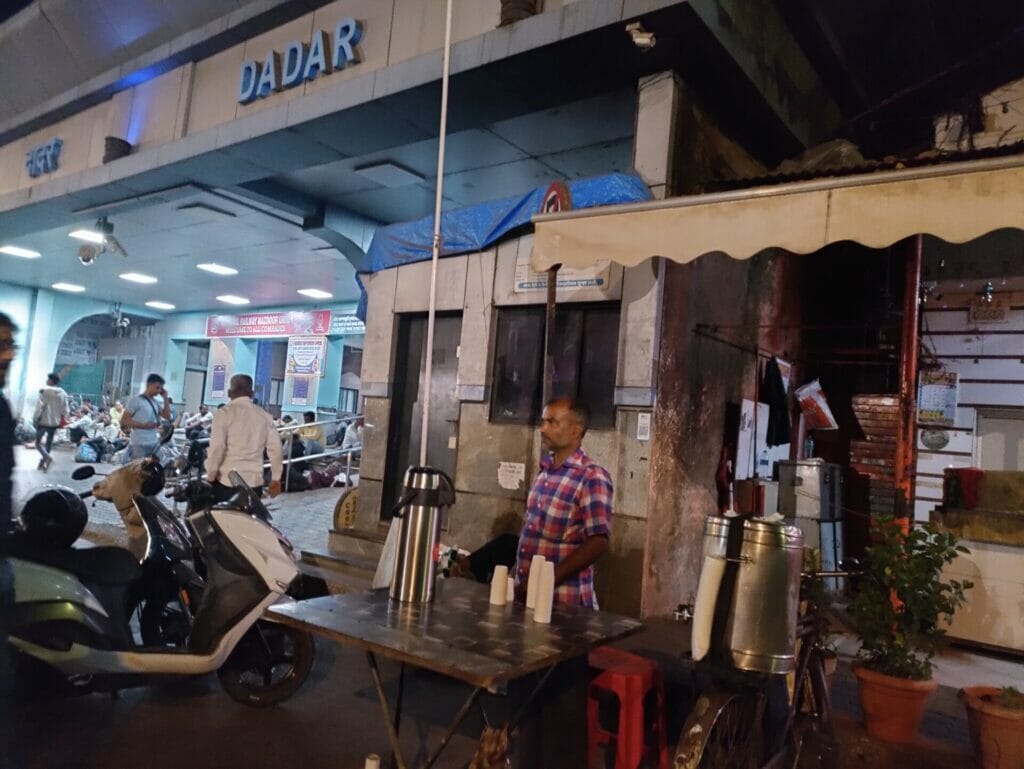Durga has been setting up an all-night tea stall for the last seven to eight years. It was going good until COVID-19 disrupted everything in 2020 and 2021. On any usual night, she stands close to a 24×7 medical shop, piggybacking on its bright florescent light, with a large tea dispenser kept on a plastic stool, and tries to pull in new customers who are either passing by on foot or on their two-wheelers.
Her husband, Sachin, helps her handle customers during the peak hours—12 am to 2 am. “Sir, chai, cigarette,” she repeats in the hope of attracting customers.

Durga makes anywhere between Rs 20,000 to Rs 25,000 in a good month. Like many other informal workers and daily wage earners, her life became a nightmare soon after the COVID-19 pandemic began in 2020. “There were lockdowns, many were even scared to get out in the night. People didn’t want to eat or drink anything from outside. Our income fell drastically,” she says. Approximately 17 million to 19.3 million women were left unemployed between March and April 2020 as a result of the stringent lockdown.
Read more: COVID19 broke the backs of Mumbai’s informal sector workers. What does 2021 hold in store?
Year-long wait for COVID to end and business to start
The world knew very little about the coronavirus then. The family of five was worried about their own health and the money was running out. “I decided to leave Mumbai the first chance I got and took my three children along to my relative’s home in Hyderabad,” says Durga. She did several jobs there, from working on farms to working at construction sites. Meanwhile, Sachin remained in Mumbai and did odd jobs here.
Durga resumed her night business in June 2021, after patiently waiting for the right time for over a year. “We were gone for so long, it took time for us to get customers. The monthly income remained a few thousands,” she recollects. The surge in COVID cases due to the Omicron variant at the beginning of 2022 didn’t help.

But things turned around for her and the income picked up to what it was in the pre-pandemic years. “The night business pays off our rent and helps with children’s school fees,” Sachin says.
New entrants to the night business after COVID
The old timers had hit the brakes on their overnight tea stalls for more than a year since the first lockdown to protect themselves from losses. But, on the other hand, new faces started turning up for the night job hoping it would bail them out of their financial woes.
For instance, before the pandemic. 52-year-old Mehrunisa was a fee collector at a ladies toilet near Dadar railway station. “A lot of women used to avail of the facility but then the trains stopped and with that my income stopped,” she says.
She remained jobless for months and depended on rations distributed by local authorities. In December 2020, her acquaintance told her she was setting up an all-night refreshment stall near the station and asked Mehrunisa to work for her. “We didn’t get a lot of customers then, even 1-litre chai wouldn’t sell.” That is not the case any more as her tea and bun maska stall has been seeing large crowds every night this year.
Navigating through legal risks
Like Mehrunissa, Sangeeta too started selling tea and tobacco products through the night out of financial distress caused by the pandemic. “I used to work in a mall but lost the job in the first lockdown. Then in the second lockdown, I decided to start this business,” she explains.
She has two daughters, one in her 12th and the other pursuing undergraduate studies. “At first the family was worried about my safety,” Sangeeta says. She allayed their fears by setting up her stall very close to her house in Lower Parel. With a certain number of loyal customers, her night business continues even as she got her old job back a year ago.
As all the night hawkers conduct this business without a licence, their only options, they say, is either to bribe the police (pay “hafta”) or run as soon as a police van appears. “We keep our products to minimum so that we can pick up everything and hide or run till the van goes away,” Sangeeta says. The fine, if caught, is around Rs 1,200. But it is rare that the tea sellers conduct their business in isolation.
“One area will have multiple sellers and we warn each other when a van is passing,” she adds.
Read more: A ‘hafta’ system haunts hawkers in Mumbai
‘Licence will block new entrants’
While those like Sangeeta feel the civic body should provide licence to those who wish to conduct such businesses, old timers like Durga believe otherwise. “Licence will bring along set places for individuals to conduct business. It will further make the poor who wish to start this business go through unnecessary hassle,” she asserts.
Maharashtra’s former tourism minister Aditya Thackeray advocated for a 24×7 Mumbai before the split between unified Shiv Sena and the Bharatiya Janta Party. The idea was given a push after the Sena-led Maha Vikas Aghadi government came to power but then it faced a setback due to the pandemic.
“There was a lot of talk going around about providing licences to us some years ago but then nothing happened. How it is functioning right now is not a bad arrangement. It is an open space for all,” says Durga.
She says the police are lenient to hawkers in her area. “We are fined sometimes but they also ensure our safety.” She doesn’t pay hafta.